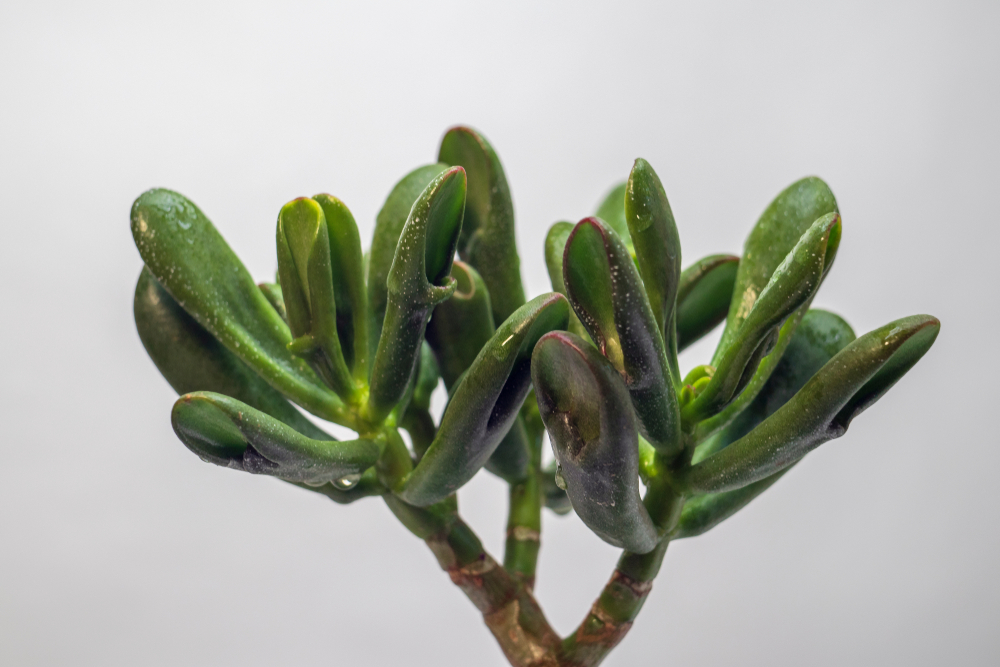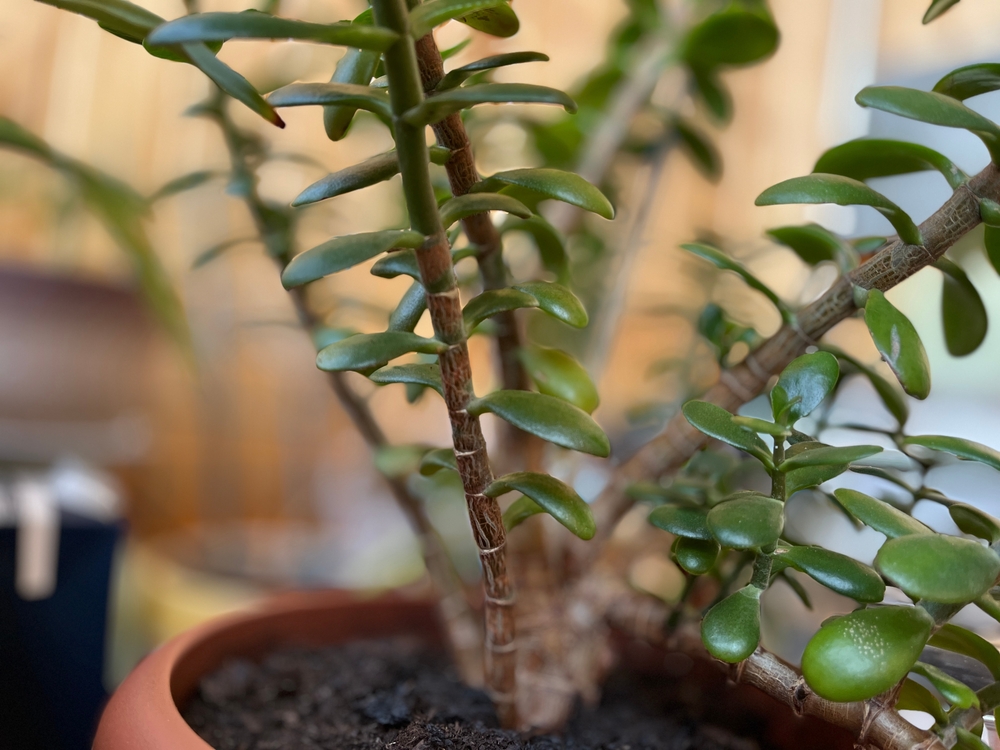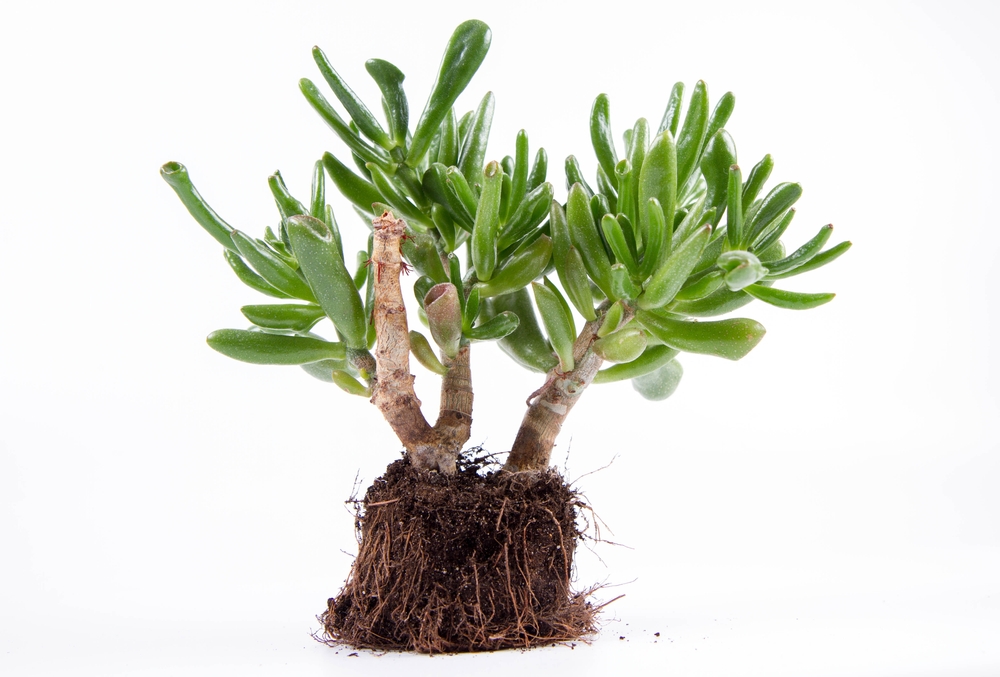Jade plants are a popular and easy-to-care-for indoor succulent known for their thick, fleshy leaves and attractive appearance. However, it can be difficult for some plant enthusiasts to determine whether their jade plant is healthy or not. In this article, we’ll explore the key characteristics of a healthy jade plant, including leaf color and texture, stem and root growth, and overall plant size and shape. We’ll also provide tips and recommendations on how to maintain the health and vibrancy of your jade plant, including how to properly water, fertilize, and prune it.
Identifying a Healthy Jade Plant
Leaves

A healthy jade plant features fleshy, oval-shaped leaves that vary in color from lime to dark green. These thick leaves store water, making the jade plant a resilient succulent when it comes to thriving in hot and dry environments(source). When exposed to ample sunlight, it is common for the edges of the leaves to develop red tips, further enhancing the plant’s overall appearance.
Stem

The stem of a healthy jade plant should appear strong, woody, and capable of supporting the plant’s leaves and branches. These stems often resemble small tree trunks, giving the jade plant its unique, shrub-like appearance(source). As the plant matures, its stems become more exposed, creating an impressive visual statement within any indoor or outdoor space.
Root System

While not visible from above ground, a jade plant’s root system plays a crucial role in its health and well-being. The roots should be firm and white – an indication that they are both alive and healthy. When repotting a jade plant, it is essential to remove any dead or rotting roots and treat any visible cuts with a fungicide before transplanting(source).
A healthy jade plant will typically grow slowly, at a rate of around 2 inches per year, eventually reaching a height between 3 to 6 feet with proper care(source). In summary, to identify a healthy jade plant, inspect the condition of its leaves, stem, and root system, ensuring that they exhibit the characteristics described above.
Factors for a Healthy Jade Plant
A healthy jade plant has specific needs that must be met in terms of lighting conditions, watering practices, soil type, and temperature and humidity levels. Ensuring that these factors are properly addressed will lead to a thriving jade plant.
Lighting
Jade plants require bright, well-lit environments to truly thrive. Ideally, they should be placed near a south or east-facing window, skylight, or sunroom to get enough natural light. Inadequate exposure to light can lead to weak leaves, slow growth, and spindly plants. It may be necessary to provide supplemental lighting during some parts of the year to maintain adequate light levels (source).
Watering
Proper watering is crucial for a jade plant’s health. It is essential to avoid letting the plant dry out completely, but also important not to over-water it. Jade plants should be watered when the top inch of soil feels dry to the touch. Over-watering can lead to root rot and other health issues. Using a well-draining soil mix and making sure the container has drainage holes will help prevent water-related problems (source).
Soil
A well-draining soil mixture is vital for a healthy jade plant. A suitable mix consists of two parts potting soil, one part sand, and one part perlite. This combination provides the right balance of moisture retention and drainage to support the plant’s growth and prevent root rot (source).
Temperature and Humidity
Jade plants grow best at room temperature, between 65°F to 75°F (18°C to 24°C). However, they prefer slightly cooler temperatures at night and during the winter months, down to 55°F (13°C). Jade plants are not frost-tolerant, so they should be brought indoors when the outside temperature drops to around 50°F (10°C) in autumn (source). As for humidity, jade plants can tolerate average household humidity levels, but prefer slightly higher humidity. To increase humidity around the plant, one can use a humidity tray, place the plant near a humidifier, or group it with other plants (source).
Common Issues and Solutions
Pest Control
Jade plants are generally resistant to pests, but they can still fall victim to certain problems such as mealybugs. These pests can be identified by their white cotton-like material found where the leaves meet the stem(source). To combat mealybugs, it’s important to remove the affected leaves and apply insecticidal soap or neem oil to the plant.
Disease Prevention
One common disease that jade plants can suffer from is bacterial soft rot. This condition causes the leaves to become soft and appear brown or rotten, sometimes accompanied by an unpleasant odor(source). To prevent bacterial soft rot, maintain proper cultivation practices to ensure the plant remains healthy and resistant.
Maintaining proper moisture levels is another critical aspect of jade plant care. Leaves that look shriveled or wrinkled are often a sign of moisture stress(source). Underwatering is usually the culprit, so adjusting the watering schedule may help to alleviate this issue.
Lastly, jade plants may fail to flower if the light conditions around them change(source). Ensuring a consistent light source can help to improve the likelihood of your jade plant flowering.
By putting in practice an effective pest control regimen and being vigilant for signs of disease, jade plant enthusiasts can keep their plants looking healthy and vibrant for many years to come.
Proper Jade Plant Care
A healthy jade plant has fleshy, oval leaves and thick, woody stems that resemble tiny tree trunks. To keep your jade plant in top condition, you need to provide the right care, including pruning, fertilizing, and repotting.
Pruning
Regular pruning helps maintain the shape and size of your jade plant, encouraging bushier growth and preventing it from becoming too leggy. Remove dead or damaged leaves and branches to promote new growth. The best time to prune is during the active growing season, from early spring to late summer.
Fertilizing
Jade plants need a well-balanced fertilizer to thrive. Fertilize every three to four months during the growing season with a diluted liquid fertilizer or a low, balanced slow-release fertilizer. Avoid fertilizing during the winter months, when jade plants go dormant and require less nutrients.
Repotting
Every two to four years, it’s a good idea to repot your jade plant, giving it fresh soil and inspecting the roots for damage or rot. When repotting, make sure to use a well-draining soil mixture with a pH of around 6.0, and choose a pot with drainage holes to prevent waterlogged roots. Ensure the new pot is slightly larger than the previous one to accommodate for growth. After repotting, give the plant some time to adjust before resuming your regular watering schedule.
By following proper jade plant care steps, your plant will remain healthy and continue to grow, maintaining its unique, tree-like appearance.
Helpful Video

My name is Daniel Elrod, and I have been houseplant love ever since I was 17. I love how much joy they bring to any room in the home. I’ve always been amazed at how a few pots of flowing leaves can turn a drab and sterile office into an inviting place where people love to work at.













































































